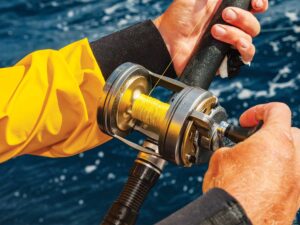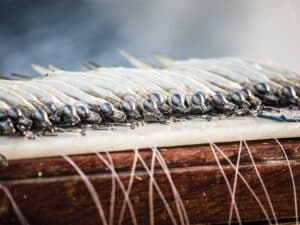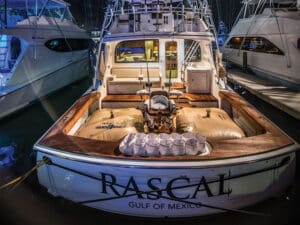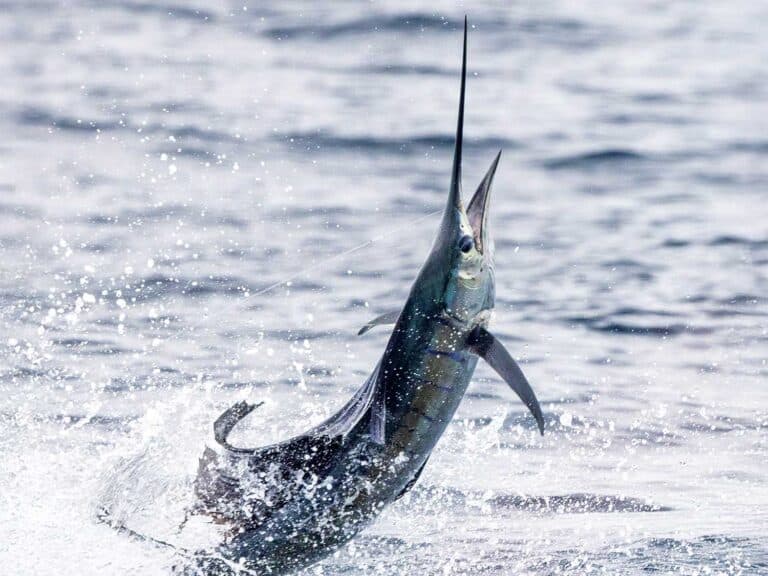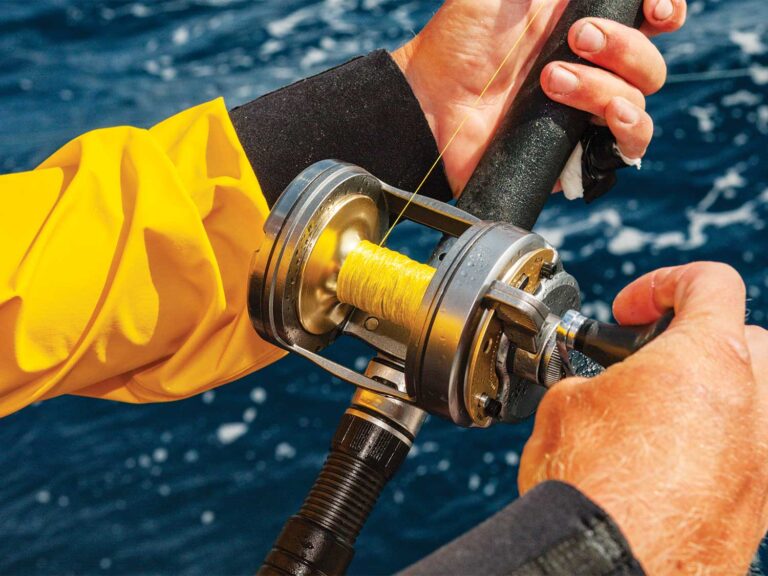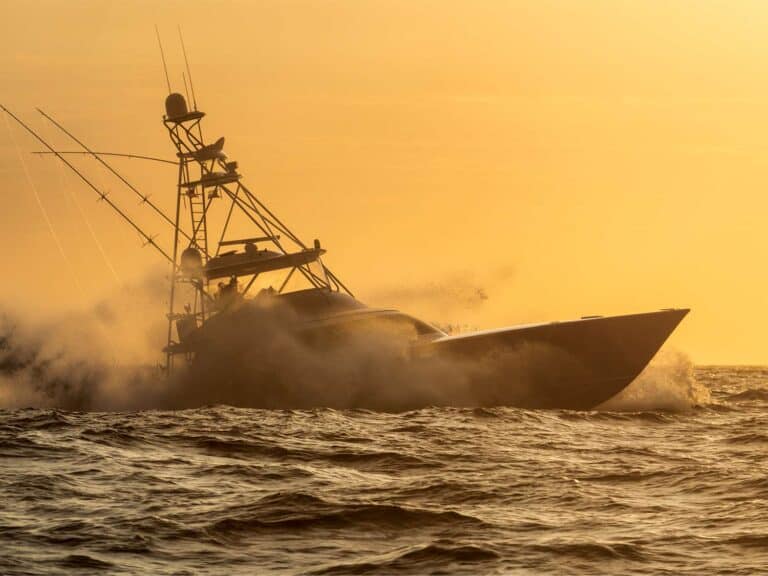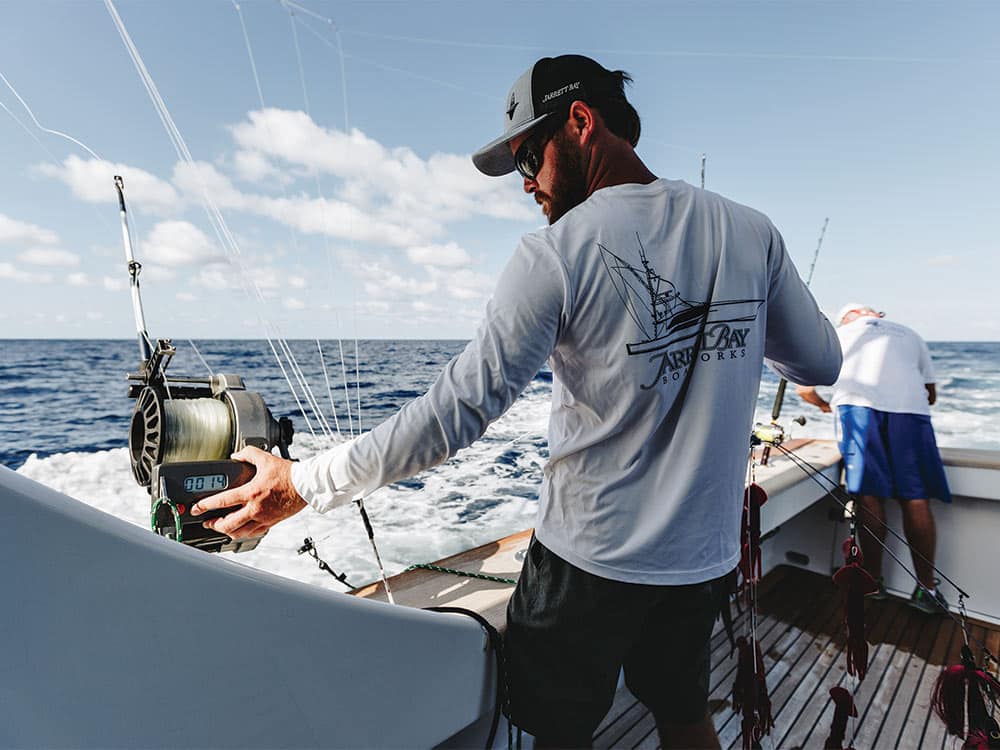
I began my obsession with sport fishing in Ocean City, Maryland, when the queens of the local charter fleet were boats in the 40-foot range that cruised at just over 20 knots. Today, a 60-footer cruising at 35 knots doesn’t even get a second look. Over the years came more definitive transducers, higher gear ratios on our reels, better satellite imagery and more. The need for something bigger, faster and better has not gone unnoticed in the world of dredges either.
The Evolution
The first sailfish dredges in Florida were modified striped bass umbrella rigs with four arms and a single tier of mullet. These were cleated off at the transom or pulled from either a manual downrigger or 11/0 Penn Senator on a broomstick rod. We’ve progressed to the point where that same mullet dredge may have three tiers and 50 or more natural baits, or it could be a giant monstrosity with 40, 60 or even 100 artificial fish or squid. The dredge needs to stay completely submerged to work properly, so the weights have also become progressively heavier as well.
Companies such as Daiwa, Kristal, Hooker Electric, Miya Epoch and Lindgren Pitman have developed powerful electric reels that can retrieve even the largest dredges and heaviest weights with ease. The dredges themselves have transitioned from thin wire umbrellas to more durable stainless-steel and even titanium construction.
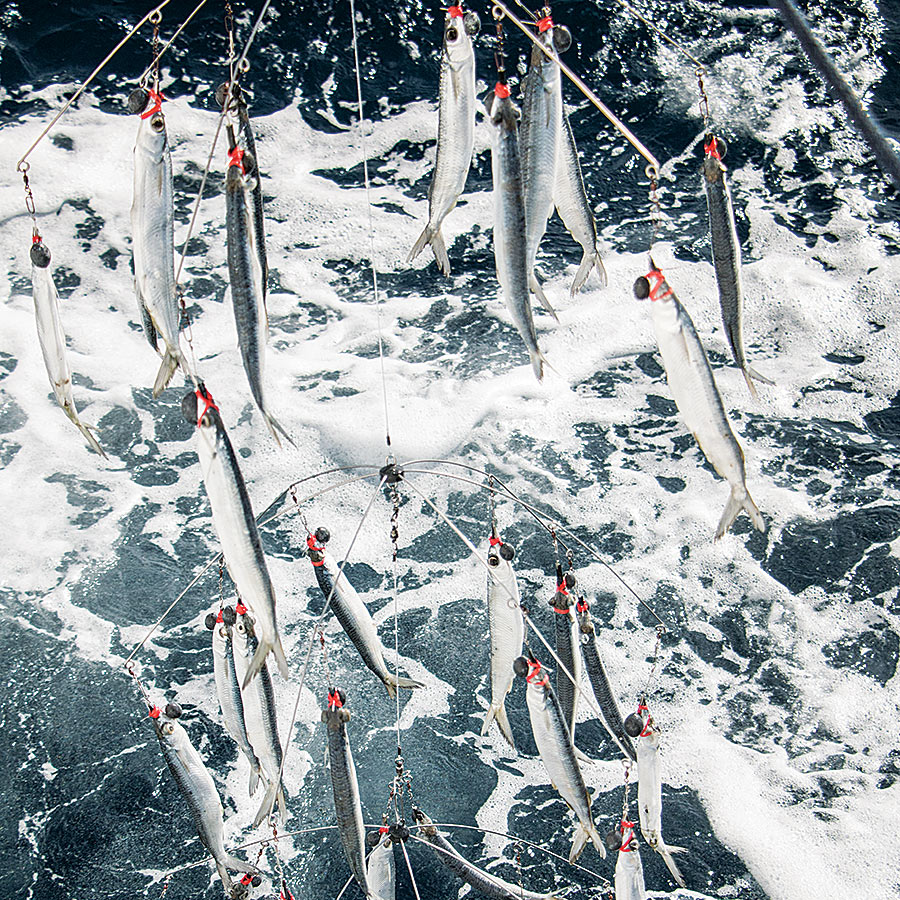
Direct Pull
There are a number of ways to rig the dredge retrieval system, depending on your vessel and choice of retrieval method. For smaller boats, a dredge pulled on heavy cord cleated off at the transom or using a downrigger is still a viable choice, but larger sport-fishers need high-speed electric reels, with Lindgren Pitman a favorite brand on most boats.
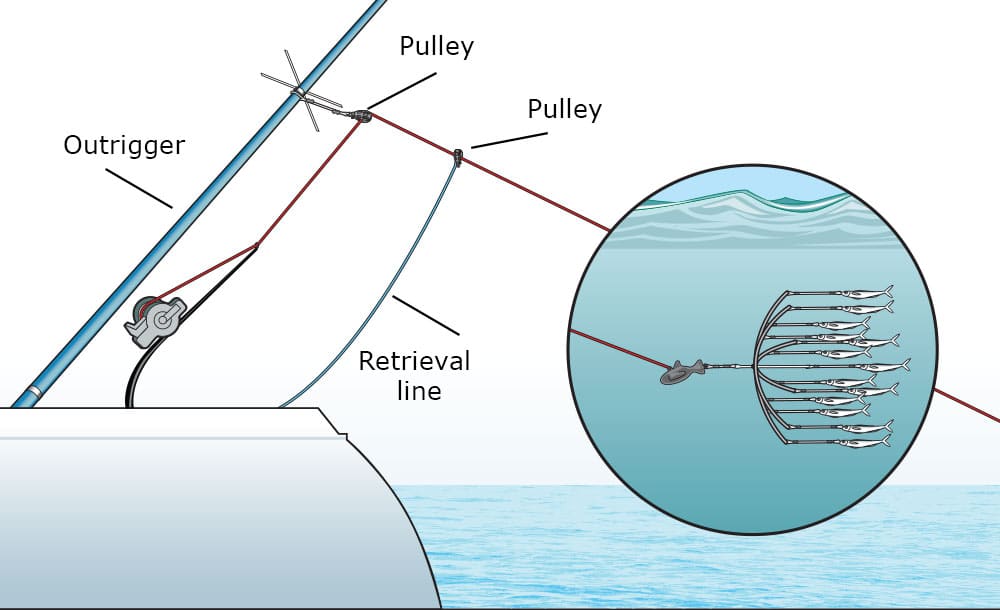
Ken Cofer, owner of the Quepos, Costa Rica-based charter boat Tranquilo, has been thoroughly impressed with the new high-speed Lindgren Pitman SV-2400 dredge reels. “These reels are so powerful that we no longer need to use a pulley system,” he says. “We have switched back to a direct connection to take advantage of the faster retrieval speed.” Cofer also mentioned distance as another factor in the switch. “In the past, the slow rate of retrieve meant that we couldn’t fish the dredges too far back — we just couldn’t get them in fast enough. There are times when we want to fish the entire spread farther back, and the new reels have the speed to let us do that. Now we can drop the dredges back 100 feet or more if we need to and still be able to clear them quickly.” By fishing the dredges in clear water, it’s easier to spot a marauding marlin or sail and still be able to rip the dredge out of the way to initiate the bait-and-switch process.
The Tranquilo system is simple: a short custom bent-butt rod with a single Winthrop swivel tip-top guide points directly at a heavy-duty pulley that is crimped to the outrigger at the first spreader. The rod holder has a swivel base to allow the rod to move as needed. Cofer adds that he had Pipewelders craft a custom sleeve to beef up the outrigger’s support bar in order to handle the extra stress.
“In the past, we have snapped some gimbal teeth on the bent-butt rod when pulling the dredges in, but now with the swivel rod holder the whole setup rotates toward the pulley, which also creates a straight path for the line from the reel to the pulley,” he says.
The A-Frame Setup
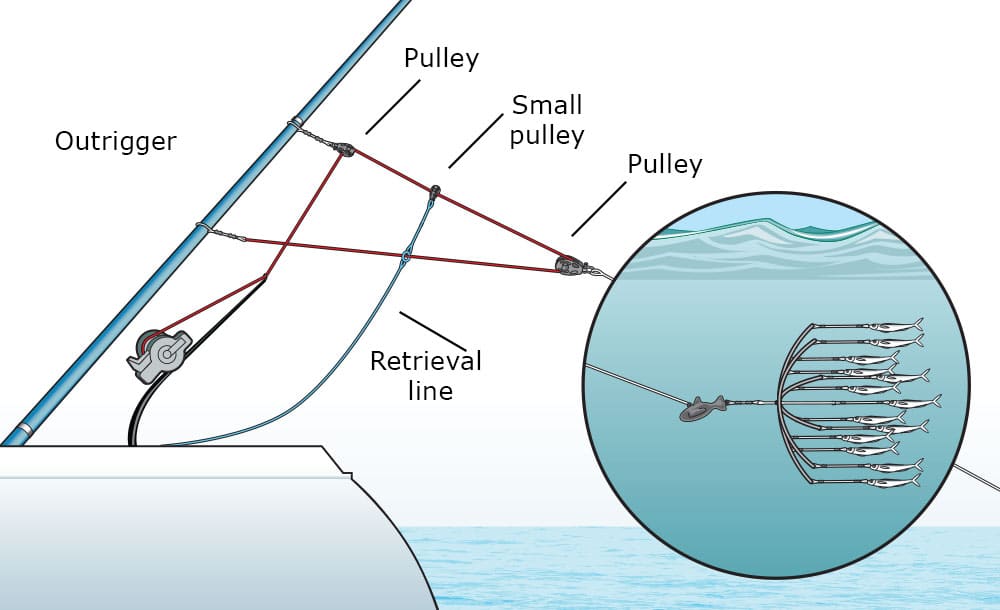
Capt. Tucker Colquhoun has recently made the transition back to Florida from Costa Rica and explained that his dredge setups are similar except for a higher reliance on natural baits when targeting sails in the Atlantic. “We typically pulled a lot of red or pink squids on our dredges in the Pacific. The fish are more finicky here, so we tend to stick to mullet,” he says. He uses the LP S-1200 reels on custom bent-butt rods with Winthrop tip guides, and he also prefers the swivel rod holders in the gunwales. Colquhoun uses an A-frame system to lessen the overall stress on the tackle. The crew attaches two pulleys on both ends of the A-frame to utilize the mechanical advantage they provide. A retrieval line is attached to the A-frame with a small pulley at the top and a loop at the bottom; this allows the crew to control the dredge close to the boat and to shake off any weed that gets caught in it. The crew can also pull down the A-frame lines to allow an angler to fight a fish on that side of the turn while still keeping the dredge in the water and raising additional billfish.
My nephew, Capt. Anthony Pino on Blood Money, a charter operation based in Ocean City, Maryland, uses a similar A-frame setup with a custom fixed rod holder on the aft tower leg of the 56-foot Viking. Palm Beach Towers makes a custom rod holder exclusively for dredge rods, which elevates the setup so that it is in a straight path from the swivel rod tip to the pulley on the outrigger. By having the dredge rods on the tower legs, it frees up an additional pair of rod holders on the gunwales. “We use our dredges when we’re tuna fishing and may have up to 10 rods in our spread,” he says, “so having all the rod holders free is a positive.” Pino says he intends to continue using the A-frame system even after upgrading to the SV-2400 reels. “The load is distributed over a greater area of the outriggers, and the A-frame avoids a single stress point,” he says.
Dredge-fishing has been around since the 1980s, and while the original tactics and tackle remained the same for over a decade, it seems that now more crews are fine-tuning their approach to every aspect of this system. The results are impressive; boats around the world are raising more billfish than ever before.
